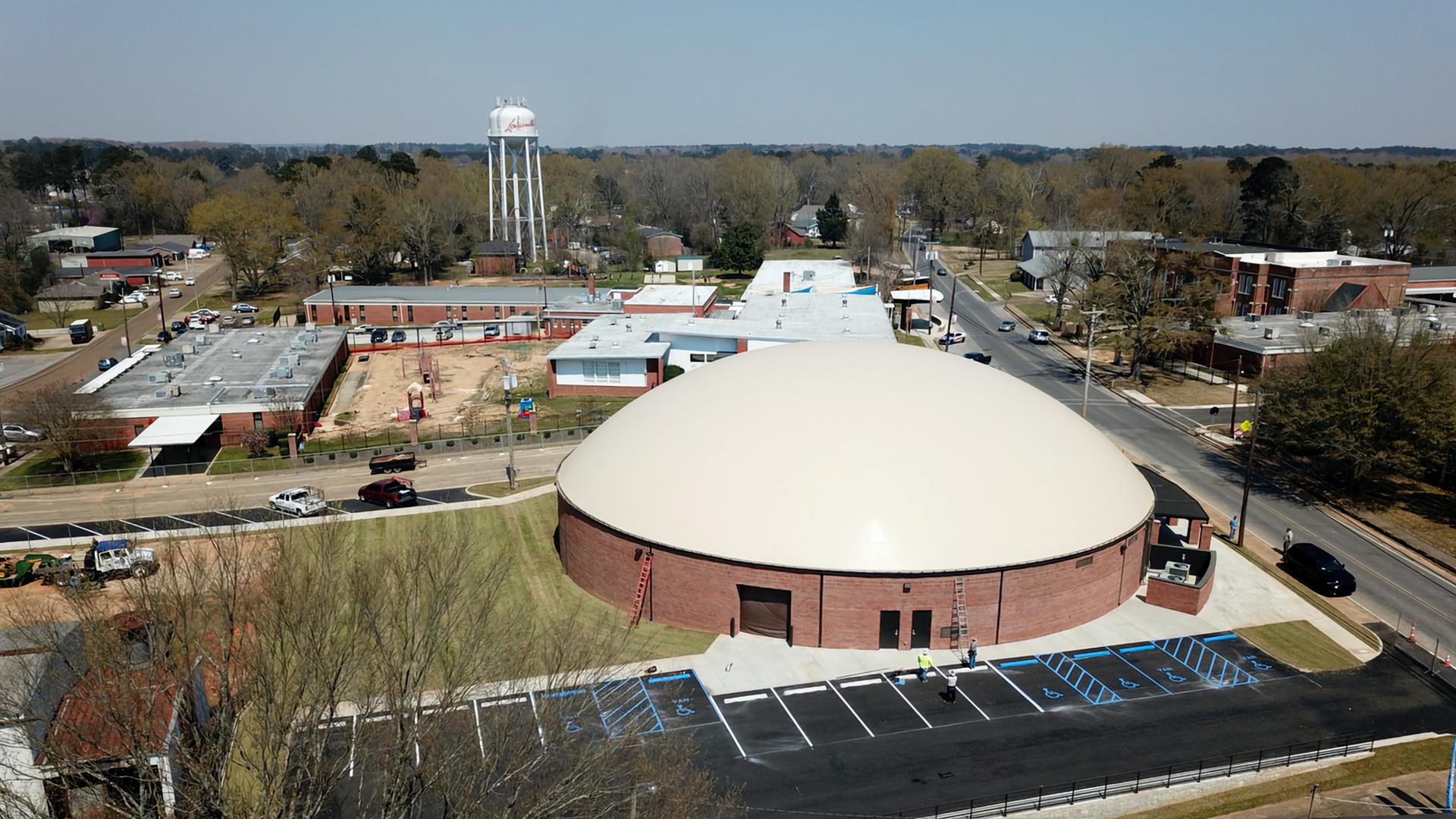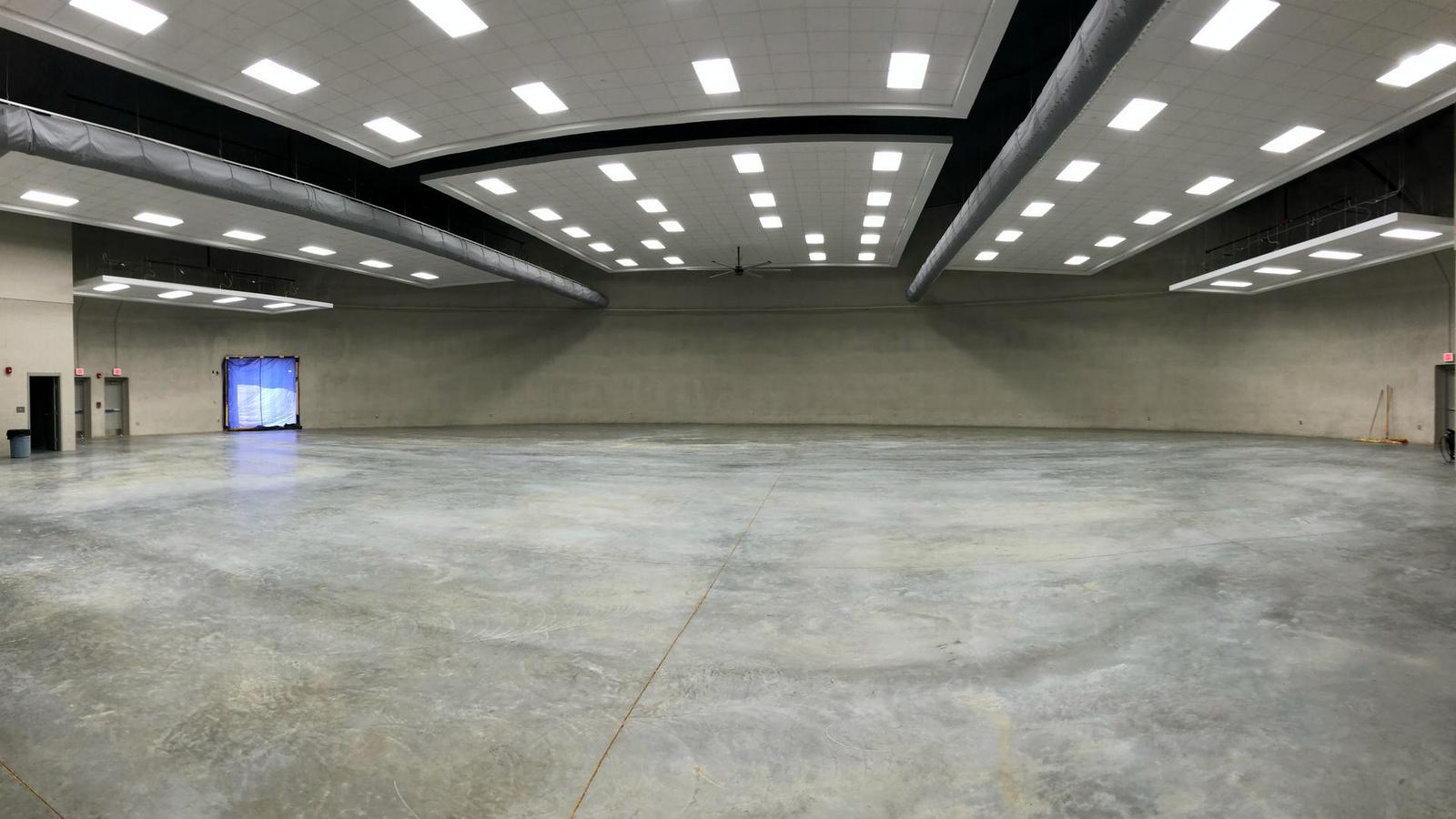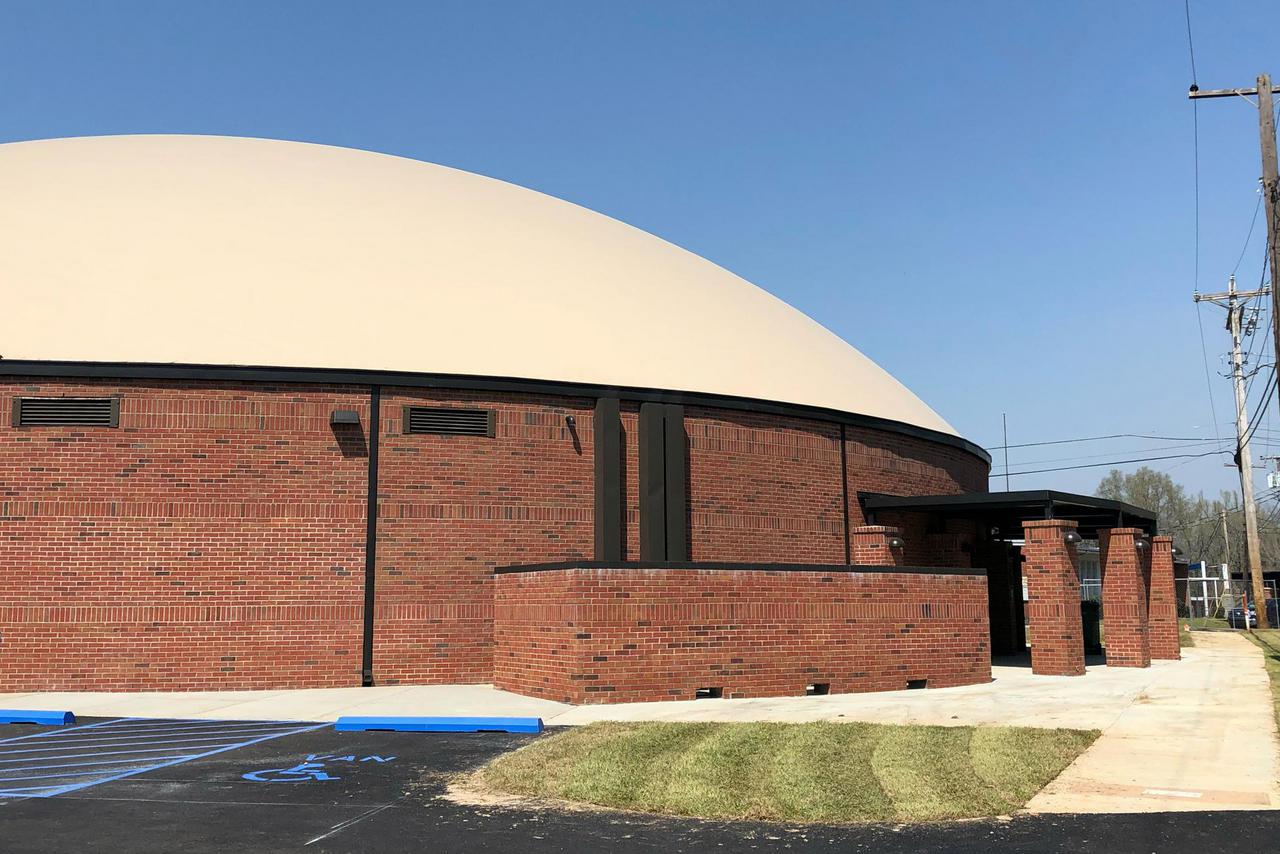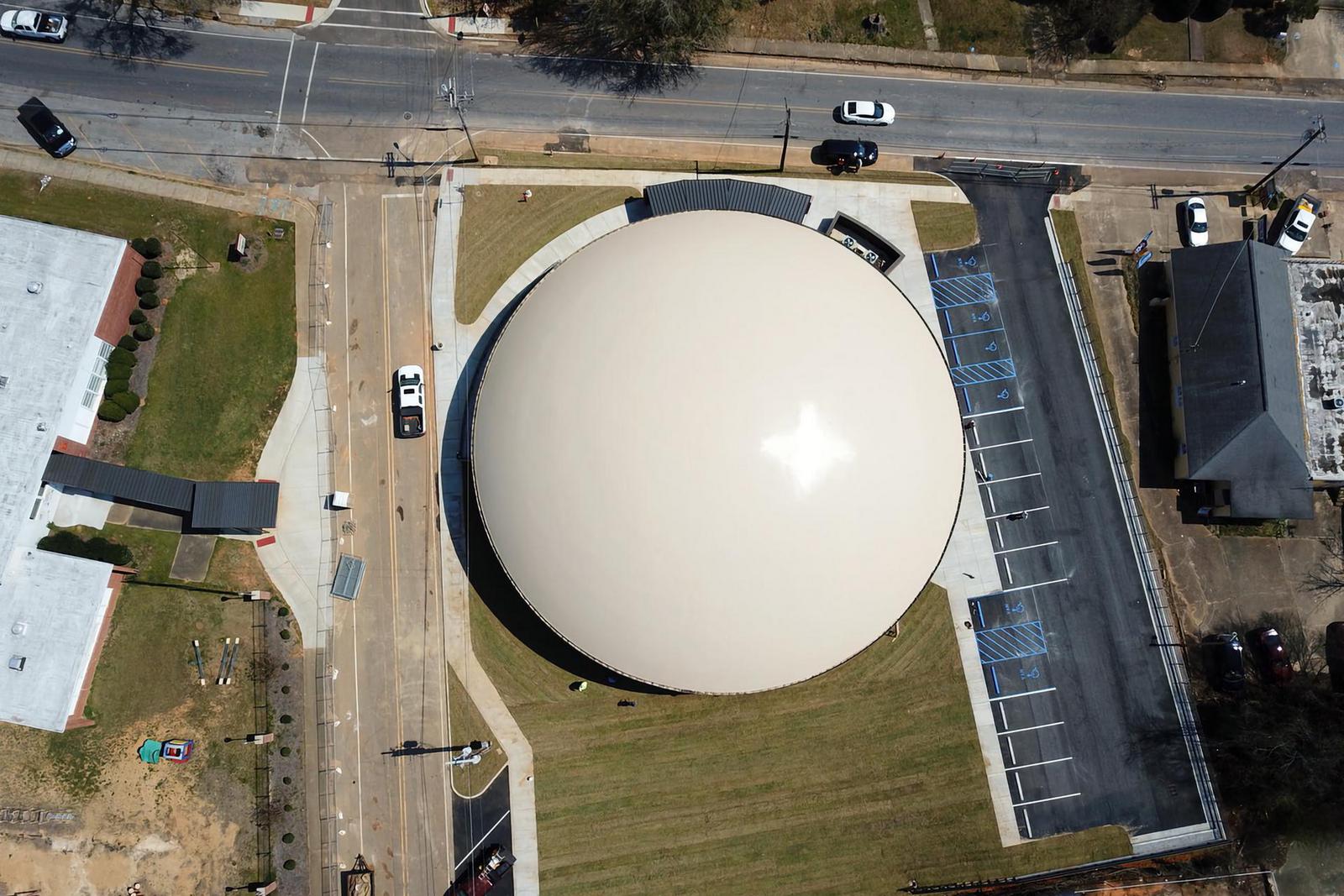The Many Uses of a Mississippi Storm Shelter

The Louisville Community Safe Room is next to Fair Elementary school (campus behind the dome) and the Louisville Elementary school (across the street on the right). Both schools use the Monolithic Dome as an activity center and as a shelter for the students during severe weather.
As tornadoes tore through parts of their state on Easter weekend 2020, many Louisville, Mississippi, residents made their way to their community safe room—again.
Storms drove people into the Monolithic Dome safe room 11 times in its first year open, said Will Hill, who has been mayor there since 2009. “In fact, even before the ribbon-cutting, we sheltered approximately 1,000 people there,” he said. “We were actually unwrapping tables and chairs that had been delivered on pallets.”
By the time that celebration rolled around on April 26, 2019, a record number of tornadoes had battered Mississippi, including 44 on one day alone. Louisville has largely been spared in those storms. But even with a pandemic complicating the logistics of sheltering together, Hill said residents were grateful. “We were all glad to have a safe room.”
Louisville is a city of about 6,600 nestled in the Red Hills of East Central Mississippi, and it serves as the Winston County seat. History remains close to the surface in its bustling downtown, home to the almost-a-century-old Strand Theater. Native son and Grammy-winning bluegrass artist Carl Jackson takes over that theater each December for his annual “Home for Christmas” show. Otherwise, Louisville is the very picture of peaceful, small-town life.

Over 2,200 people can take refuge in the dome during a storm. The structure is designed to FEMA P-361 specifications for 250 MPH winds.
But on April 28, 2014, that peace was upended as tornadoes ripped through Mississippi, including a wide EF-4 that churned more than 30 miles across Winston County and left 10 dead. Entire blocks disappeared in an instant, transformed into rubble tossed in all directions. The community hospital was wiped out along with a clinic and nursing homes. Two of the dead were found a third of a mile from the home where they were riding out the storm. Another victim, a daycare worker, died while shielding one of her charges.
Hill was shaken by the destruction he saw immediately afterward. “I couldn’t believe anyone was able to survive the storm,” he said. “It did not discriminate. It hit the haves, the have-nots—it was awful.”
That day has left an indelible mark on the community. “You have these pivotal moments in life,” Hill said. “That’s our community’s definitive moment—April 28, 2014.”
Determined to protect residents, city officials began blocking out plans for a community shelter. They looked at other places such as Smithville, a small town northwest of Louisville in Monroe County, Mississippi. After an EF-5 tornado almost wiped out the town in 2011, officials there rebuilt the school with a Monolithic Dome on the grounds. It serves as the school gym and a community safe room as needed.
Louisville officials originally planned to follow suit, using state hazard mitigation funds to build a dome at a rural school. That school desperately needed a new cafeteria, though, plus the state of Mississippi was discouraging public facilities on school grounds. In the wake of school shootings across the country, many experts questioned opening up a campus to the public during the school day. So officials instead opted to install a hardened structure on the campus that could double as a cafeteria and a safe room for school students and staff.

The Monolithic Dome is on the corner of College and Columbus streets near the Louisville town center. This location is close to emergency services and an easy place for residents to drive to for safety.
Officials found an alternate site just off downtown, near a pair of two historic elementary schools. The location allows both schools to use the facility as an activity center while keeping the public off school grounds during the school day. The location is also closer to emergency response teams.
A dome initially was just one idea on the table, but Hill said he began to see some distinct advantages to it once the city began working with the architects, JBHM Architecture.
“The dome is so architecturally different,” he said. “We thought it would draw so much attention, be unique to our community, and it would not get lost in the shuffle (in the event of an emergency). The fact that it’s a dome gives it an identity as a safe room.”
Building a public shelter can be an expensive proposition, and ongoing expenses can make it impossible. The city struck a deal with the school district: The city would pay for construction, incorporating government funds where possible, and the school district would lease it to provide activity space for the two neighboring schools. Under the lease, the space is the school’s to use from 7 a.m. to 4 p.m. Monday through Friday during the school year. Outside those hours, the city can lease out the facility for events.
“So we don’t have any ongoing expenses,” Hill said. “The lease matches what the insurance and upkeep are. And when we rent it out, we put that money back into it to keep it furnished or invest in additional upgrades to the facility.”
The community has embraced the quirky addition to the city’s skyline, Hill said. Locally known as just The Dome, the facility is designed to hold about 2,000 people. This offers plenty of space for everything from job fairs to auctions to the annual citywide Christmas party.
“But its primary use is as a storm shelter,” Hill said, which city deliberately keeps the schedule light during storm season. “But I never dreamed it would get used 11 times in its first year.”
